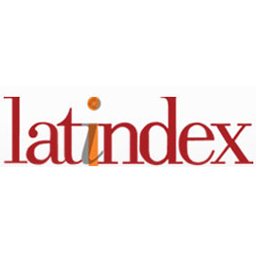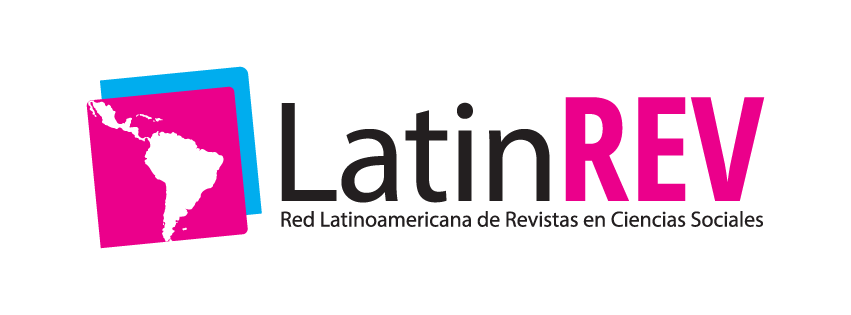Strategic Orientations, Commitment and Organizational Performance: scale validation in the Creative Industry
Resumen
This study aimed to test the validity and reliability of an instrument designed to measure the relationship between organizational commitment, learning orientation, entrepreneurial orientation and organizational performance in the creative industries sector. Through an exploratory analysis using a structural model based on Partial Least Squares (PLS), we determined a Cronbach's alpha and composite reliability greater than 0.90, Average Variance Extracted (AVE) values greater than 0.61 and levels of discriminant validity lower than 0.85. We obtained an instrument consisting of 24 items that is considered valid and reliable.
Palabras clave
Texto completo:
PDF (English)Referencias
Allen, N. J., & Meyer, J. P. (1990). The measurement and antecedents of affective , continuance and normative commitment to the organization. Journal of Occupational Psychology, 63, 1–18.
An, W., Zhao, X., Cao, Z., Zhang, J., & Liu, H. (2018). How Bricolage Drives Corporate Entrepreneurship: The Roles of Opportunity Identification and Learning Orientation. Journal of Product Innovation Management, 35(1), 49–65. https://doi.org/10.1111/jpim.12377
Arciniega, L. M., & González, L. (2006). What is the influence of work values relative to other variables in the development of organizational commitment ? Revista de Psicología Social, 21(1), 35–50.
Baker, W. E., & Sinkula, J. M. (1999). The Synergistic Effect of Market Orientation and Learning Orientation on Organizational Performance. Journal of the Academy of Marketing Science, 27(4), 411–427.
Bauweraerts, J., & Colot, O. (2017). Exploring nonlinear effects of family involvement in the board on entrepreneurial orientation. Journal of Business Research, 70, 185–192. https://doi.org/10.1016/j.jbusres.2016.08.020
Berger Werlang, N., & Follman Orth, D. (2017). Orientação para aprendizagem, inovatividade organizacional e desempenho organizacional sob a ótica de empresas internacionalizadas. Revista GEINTEC, 7(3), 3923–3938. https://doi.org/10.7198/geintec.v7.i3.866
Boix, R., & Lazzeretti, L. (2012). Las industrias creativas en España: una panorámica. Investigaciones Regionales, 22, 181–205.
Buitrago Restrepo, F., & Duque Márquez, I. (2013). La economia naranja: Una oportunidad infinita (Banco Interamericano del Desarrollo (ed.)). Puntoaparte bookvertising.
https://publications.iadb.org/bitstream/handle/11319/3659/La economia naranja: Una oportunidad infinita.pdf
Calantone, R. J., Cavusgil, V., & Zhao, Y. (2002). Learning orientation, firm innovation capability, and firm performance. Industrial Marketing Management, 31(6), 515–524.
Cardona Montoya, R. A., Martins, I., & Velásquez Ceballos, H. (2017). Entrepreneurial orientation, assessment and management of projects and impact in corporate entrepreneurship: intention to action. Cuadernos de Gestión, 17(2), 37–60. https://doi.org/10.5295/cdg.140511rc
Carrizo Moreira, A., & Silva, P. M. (2013). Market Orientation, Innovation and Organizational Commiment in Industrial firms. Tržište, 2, 123–142.
Casas Martínez, M. de la L., de Paula Ramos, D., Páez, R., & Villela, J. (2011). Consideraciones sobre el estado actual de los comités de ética de la investigación en países de Latinoamérica. In F. J. León Correa (Ed.), Ética Clínica y Comités de Ética en Latinoamérica (1era Ed., pp. 53–63).
FELAIBLE, Sociedad Chilena de Bioética y Fundación Interamericana Ciencia y Vida.
Chavez, R., Yu, W., Jacobs, M. A., & Feng, M. (2017). Manufacturing capability and organizational performance: The role of entrepreneurial orientation. International Journal of Production Economics, 184(March 2016), 33–46. https://doi.org/10.1016/j.ijpe.2016.10.028
Chin, W. W. (1998). The Partial Least Squares Approach to Structural Modeling. In N. J. Mahwah & E. Lawrence (Eds.), Modern Methods for Business Research (Issue April, pp. 295–336).
Chin, W. W., Peterson, R. A., & Brown, S. P. (2008). Structural equation modeling in marketing: Some practical reminders. Journal of Marketing Theory and Practice, 16(4), 287–298. https://doi.org/10.2753/MTP1069-6679160402
Covin, J. G., & Slevin, D. P. (1989). Strategic management of small firms in hostile and benign enviroments. Strategic Management Journal, 10(1), 75–87. https://doi.org/10.1002/smj.4250100107
Covin, J. G., & Wales, W. J. (2011). The Measurement of entrepreneurial orientation. Entrepreneurship: Theory and Practice, 36(4), 677–702. 10.1111/j.1540-6520.2010. 00432.x
D’Amato, A., & Herzfeldt, R. (2008). Learning orientation, organizational commitment and talent retention across generations. Journal of Managerial Psychology, 23(8), 929–953. https://doi.org/10.1108/02683940810904402
Daryani, M. A., & Karimi, A. (2018). Effect of Corporate Entrepreneurship on Firm Perfor mance in Iranian ASMEs: The Mediation Role of Knowledge Crea tion and Learning Orientation. Journal of Agricultural Science and Technology, 19, 261–277. http://ir.jkuat.ac.ke/handle/123456789/3674
De Clercq, D., & Belausteguigoitia Rius, I. (2007). Organizational commitment in Mexican small and medium-sized firms: The role of work status, organizational climate, and entrepreneurial orientation. Journal of Small Business Management, 45(4), 467–490. https://doi.org/10.1111/j.1540-627X.2007.00223.x
De Clercq, D., Dimov, D., & Thongpapanl, N. (Tek). (2010). The moderating impact of internal social exchange processes on the entrepreneurial orientation-performance relationship. Journal of Business Venturing, 25(1), 87–103. https://doi.org/10.1016/j.jbusvent.2009.01.004
De Clercq, D., Mohammad Rahman, Z., & Belausteguigoitia, I. (2017). Task Conflict and Employee Creativity: The Critical Roles of Learning Orientation and Goal Congruence. Human Resource Management, 56(1), 93–109. https://doi.org/10.1002/hrm.21761
Del Castillo, C., & Vargas, B. (2009). El proceso de gestión y el desempeño organizacional. Una aproximación a la nueva gestión pública desde el ámbito de los gobiernos locales. Journal of Economics, Finance and Administrative Science, 14(26), 57–80. http://www.redalyc.org/pdf/3607/360733606003.pdf
Delgado Márquez, B. L., Luisa, D. M., & Hurtado Torres, N. E. (2013). Emprendimiento corporativo y capital social: Un análisis de empresas intensivas en tecnología. Revista Venezolana de Gerencia, 18(61), 62–85.
Farrukh, M., Chong, W. Y., Mansori, S., & Ravan Ramzani, S. (2017). Intrapreneurial behaviour: the role of organizational commitment. World Journal of Entrepreneurship, Management and Sustainable Development, 13(3), 243–256. https://doi.org/10.1108/WJEMSD-03-2017-0016
Ferrándiz, R. R. (2011). De industrias culturales a industrias del ocio y creativas: Los límites del «campo» cultural. Comunicar, 18(36), 149–156. https://doi.org/10.3916/C36-2011-03-06
Florida, R. (2002). The rise of the Creative Class, why cities without gays and rock bands are losing the aconomic development race. The Washington Monthly, 15–25. https://doi.org/10.1089/dna.2007.0590
Florida, R. (2012). The Rise of the Creative Class--Revisited: 10th Anniversary Edition--Revised and Expanded (Second ed.). Basic Books.
Galletta, M., & Portoghese, I. (2012). Organizational citizenship behavior in healthcare: The roles of autonomous motivation. Revue Internationale de Psychologie Sociale, 25(3–4), 121–145.
Garrido, M. J., & Camarero, C. (2010). Assessing the impact of organizational learning and innovation on performance in cultural organizations. International Journal of Nonprofit and Voluntary Sector Marketing, 232(September 2009), 215–232. https://doi.org/10.1002/nvsm
Gupta, R., & Pandit, A. (2008). Strategic Entrepreneurial Orientation : Development of a Multi-Dimensional Construct Based on Literature Review. South Asian Journal of Management, 19, 88–110.
Hair, J. F., Sarstedt, M., Pieper, T. M., & Ringle, C. M. (2012). The Use of Partial Least Squares Structural Equation Modeling in Strategic Management Research: A Review of Past Practices and Recommendations for Future Applications. Long Range Planning, 45(5–6), 320–340. https://doi.org/10.1016/j.lrp.2012.09.008
Hakala, H. (2011). Strategic Orientations in Management Literature : Three Approaches to Understanding the Interaction between Market , Technology , Entrepreneurial and. International Journal of Management Reviews, 13, 199–217. https://doi.org/10.1111/j.1468-2370.2010.00292.x
Hakala, H., Sirén, C., & Wincent, J. (2016). Entrepreneurial Orientation and International New Entry: The Moderating Role of Autonomy and Structures in Subsidiaries. Journal of Small Business Management, 54, 90–112. https://doi.org/10.1111/jsbm.12294
Hearn, G., Roodhouse, S., & Blakey, J. (2007). From value chain to value creating ecology: Implications for creative industries development policy. International Journal of Cultural Policy, 13(4), 419–436. https://doi.org/10.1080/10286630701683367
Henseler, J., Ringle, C. M., & Sarstedt, M. (2014). A new criterion for assessing discriminant validity in variance-based structural equation modeling. Journal of the Academy of Marketing Science, 43(1), 115–135. https://doi.org/10.1007/s11747-014-0403-8
Henseler, J., Ringle, C. M., & Sinkovics, R. R. (2009). The use of partial least squares path modeling in international marketing. Advances in International Marketing, 20(2009), 277–319. https://doi.org/10.1108/S1474-7979(2009)0000020014
Hughes, M., & Morgan, R. E. (2007). Deconstructing the relationship between entrepreneurial orientation and business performance at the embryonic stage of firm growth. Industrial Marketing Management, 36(5), 651–661. https://doi.org/10.1016/j.indmarman.2006.04.003
Jankowska, B. (2013). Coopetition As an Attribute of Clusters Fostering Innovativeness of Enterprises – the Case of One Creative Cluster. International Journal of Business and Management Studies, 5(1), 69–80.
Jogaratnam, G. (2017). The effect of market orientation, entrepreneurial orientation and human capital on positional advantage: Evidence from the restaurant industry. International Journal of Hospitality Management, 60, 104–113. https://doi.org/10.1016/j.ijhm.2016.10.002
Klimas, P., & Czakon, W. (2018). Organizational innovativeness and coopetition: a study of video game developers. Review of Managerial Science, 12(2), 469–497. https://doi.org/10.1007/s11846-017-0269-5
Kollmann, T., Stöckmann, C., Meves, Y., & Kensbock, J. M. (2017). When members of entrepreneurial teams differ: linking diversity in individual-level entrepreneurial orientation to team performance. Small Business Economics, 48(4), 843–859. . https://doi.org/10.1007/s11187-016-9818-6
Laukkanen, T., Nagy, G., Hirvonen, S., Reijonen, H., & Pansen, M. (2013). The effect of strategic orientations on business performance in SMEs: A multigroup analysis comparing Hungary and Finlan. International Marketing Review, 30(6), 510–535. . https://doi.org/10.1108/IMR-09-2011-0230
Linton, G., & Kask, J. (2017). Configurations of entrepreneurial orientation and competitive strategy for high performance. Journal of Business Research, 70, 168–176. https://doi.org/10.1016/j.jbusres.2016.08.022
Llobet, J., & Fito, M. A. (2013). Organizational Commitment, job satisfaction and intention to stay: Literature review. Intangible Capital, 9(4), 1068–1079. https://doi.org/10.3926/ic.475
Llonch Andreu, J., López Belbeze, M. P., & Eusebio, R. (2007). Orientación al aprendizaje, Orientación al mercado, Resultados y el efecto moderador de la procedencia funcional del Director General. Cuadernos de Econompia y Dirección de La Empresa, 33, 63–94.
Lonial, S. C., & Carter, R. E. (2015). The impact of organizational orientations on medium and small firm performance: A resource-based perspective. Journal of Small Business Management, 53(1), 94–113. https://doi.org/10.1111/jsbm.12054
Lumpkin, G. T., & Dess, G. G. (1996). Clarifying the Entrepreneurial Orientation Construct and Linking It to Performance Author. The Academy of Management Review, 21(1), 135–172. http://www.jstor.org/stable/2586322
Lumpkin, G. T., & Dess, G. G. (2001). Linking two dimensions of entrepreneurial orientation to firm performance: The moderating role of environment and industry life cycle. Journal of Business Venturing, 16(5), 429–451. https://doi.org/10.1016/S0883-9026(00)00048-3
Mariani, M. M. (2007). Coopetition as an Emergent Strategy: Empirical Evidence from an Italian Consortium of Opera Houses. International Studies of Management & Organization, 37(2), 97–126. https://doi.org/10.2753/imo0020-8825370205
Máynez Guaderrama, A. I., & Vargas Salgado, M. M. (2019). Modelos de ecuaciones estructurales mediante mínimos cuadrados parciales: un ejemplo de su aplicación en el campo de las ciencias administrativas. In A. I. Máynez Guaderrama & L. T. V. Guadalupe (Eds.), La práctica de la investigación en las Ciencias Administrativas (Primera ed, pp. 133–135). Pearson.
Melgar Bayardo, J. (2011). Efectos del downsizing en la satisfacción laboral y el compromiso de los supervisores de producción: Caso de la Industria Maquiladora de Ciudad Juárez, Chihuahua, México [Universidad de Granada]. https://hera.ugr.es/tesisugr/19806814.pdf
Meyer, J. P., & Allen, N. J. (1984). Testing the “side-bet theory” of organizational commitment: Some methodological considerations. Journal of Applied Psychology, 69(3), 372–378. https://doi.org/10.1037/0021-9010.69.3.372
Meyer, J. P., & Allen, N. J. (1991). A Three-Component Model Conceptualization of Organizational Commitment. Human Resource Management Review, 1(1), 61–89. https://doi.org/10.1016/1053-4822(91)90011-Z
Meyer, J. P., & Herscovitch, L. (2001). Commitment in the workplace: Toward a general model. Human Resource Management Review, 11(3), 299–326. https://doi.org/10.1016/S1053-4822(00)00053-X
Meyer, J. P., Stanley, D. J., Herscovitch, L., & Topolnytsky, L. (2002). Affective, Continuance, and Normative Commitment to the Organization: A Meta-analysis of Antecedents, Correlates, and Consequences. Journal of Vocational Behavior, 61(1), 20–52. https://doi.org/10.1006/jvbe.2001.1842
Miller, D. (2011). Miller (1983) Revisited: A reflection on EO research and some suggestions for the future. Entrepreneurship: Theory and Practice, 35(5), 873–894. 10.1111/j.1540-6520.2011. 00457.x
Nasution, H. N., Mavondo, F. T., Jekanyika, M., & Oly, N. (2011). Industrial Marketing Management Entrepreneurship : Its relationship with market orientation and learning orientation and as antecedents to innovation and customer value. Industrial Marketing Management, 40(3), 336–345. https://doi.org/10.1016/j.indmarman.2010.08.0022
Padilla Monroy, M. J. (2015). Diagnóstico Sectorial. Diseño E Innovación.
Pittino, D., Visintin, F., & Lauto, G. (2017). A configurational analysis of the antecedents of entrepreneurial orientation. European Management Journal, 35(2), 224–237. https://doi.org/10.1016/j.emj.2016.07.003
Pratono, A. H., & Mahmood, R. (2015). Entrepreneurial orientation and firm performance: How can micro, small and medium-sized enterprises survive environmental turbulence? Pacific Science Review B: Humanities and Social Sciences, 1(2), 85–91. https://doi.org/10.1016/j.psrb.2016.05.003
Quartesan, A., Romis, M., & Lanzafame, F. (2007). Cultural industries in Latin America and the Caribbean : challenges and opportunities. http://services.iadb.org/wmsfiles/products/Publications/1152852.pdf
Real, J. C., Roldán, J. L., & Leal, A. (2014). From entrepreneurial orientation and learning orientation to business performance: Analysing the mediating role of organizational learning and the moderating effects of organizational size. British Journal of Management, 25(2), 186–208. https://doi.org/10.1111/j.1467-8551.2012.00848.x
Scharager, J., & Reyes, P. (2001). Muestreo no probabilistico. In Metodología de la investigación para las ciencias sociales (Issue 2001). Pontificia Universidad Católica de Chile.
Secretaría de Economía. (2018). SIEM. SIEM Digital. https://www.siem.gob.mx/
Semrau, T., Ambos, T., & Kraus, S. (2016). Entrepreneurial orientation and SME performance across societal cultures: An international study. Journal of Business Research, 69(5), 1928–1932. https://doi.org/10.1016/j.jbusres.2015.10.082
Shampy Kamboj, Z. R. (2015). Marketing capabilities and firm performance: literature review and future research agendat. International Journal of Productivity and Performance Management, 64(4), 544–566. https://doi.org/10.1108/IJPPM-10-2012-0108
Shan, P., Song, M., & Ju, X. (2014). Entrepreneurial orientation and performance: Is innovation speed a missing link? Journal of Business Research, 69(2), 683–690. https://doi.org/10.1016/j.jbusres.2015.08.032
Sinkula, J. M., Baker, W. E., & Noordewier, T. (1997). A framework for market-based organizational learning: Linking values, knowledge, and behavior. Journal of the Academy of Marketing Science, 25(4), 305–318. https://doi.org/10.1177/0092070397254003
Steinhaus, C. S., & Perry, J. L. (1996). Organizational Commitment : Does Sector Matter ? L. Pulic Productivity & Management Review, 19(3), 278–288. http://www.jstor.org/stable/3380575
Tajeddini, K., Altinay, L., & Ratten, V. (2017). Service innovativeness and the structuring of organizations: The moderating roles of learning orientation and inter-functional coordination. International Journal of Hospitality Management, 65, 100–114. https://doi.org/10.1016/j.ijhm.2017.06.010
Vij, S., & Bedi, H. S. (2012). Relationship Between Entrepreneurial Orientation and Business Performance: A Review of Literature. IUP Journal of Business Strategy, 9(3), 17–31. https://papers.ssrn.com/sol3/papers.cfm?abstract_id=2179844
Wang, C. L. (2008). Entrepreneurial orientation, learning orientation and firm performance. Entrepreneurship: Theory and Practice, 44(0), 635–657.
Wolff, J. A., Pett, T. L., & Ring, J. K. (2015). Small firm growth as a function of both learning orientation and entrepreneurial orientation An empirical analysis. Journal of Managerial Psychology, 21(5), 709–730. https://doi.org/http://dx.doi.org/10.1108/02683940010305270
Yahaya, R., & Ebrahim, F. (2016). Leadership styles and organizational commitment: literature review. Journal of Management Development, 35(2), 190–216. https://doi.org/10.1108/JMD-01-2015-0004
Zehir, C., Can, E., & Karaboga, T. (2015). Linking Entrepreneurial Orientation to Firm Performance: The Role of Differentiation Strategy and Innovation Performance. Procedia - Social and Behavioral Sciences, 210, 358–367. https://doi.org/10.1016/j.sbspro.2015.11.381
Enlaces refback
- No hay ningún enlace refback.
Copyright (c) 2021 Regiones y Desarrollo Sustentable

Este obra está bajo una licencia de Creative Commons Reconocimiento 4.0 Internacional.
REGIONES Y DESARROLLO SUSTENTABLE
Año XXIII, No. 44, Enero-Diciembre, 2023, es una revista de publicación continua editada por El Colegio de Tlaxcala, A.C., Avenida Melchor Ocampo No. 28, Col. San Pablo Apetatitlán, Apetatitlán de Antonio Carvajal, Tlaxcala, C. P. 90600 Tel. 52 (246) 46 4 52 33, ext. 1135, http://www.coltlax.edu.mx/openj/index.php/ReyDS, rev_regionesydesarrollosustentable@coltlax.edu.mx Editor responsable: Arturo Juárez Martínez. Reserva de Derechos al Uso Exclusivo No., ISSN:2594-1429, otorgados por el Instituto Nacional de Derecho de Autor. Responsable de la última actualización de este número, Departamento de Ediciones de El Colegio de Tlaxcala, A.C., Arturo Juárez Martínez, Avenida Melchor Ocampo No. 28, Col. San Pablo Apetatitlán, Apetatitlán de Antonio Carvajal, C.P. 90600, fecha de última modificación: 02 de febrero de 2024.








